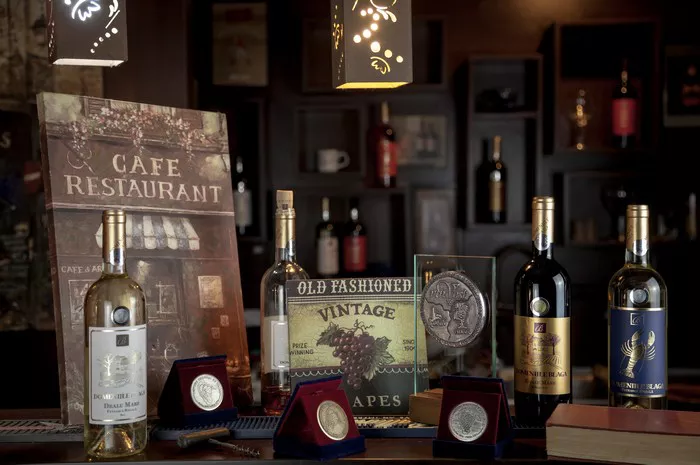Sangria, with its refreshing blend of wine, fruits, and sometimes added spirits, has long been a beloved beverage choice, especially during warmer seasons and social gatherings. However, for those mindful of their calorie intake, understanding the caloric content of this delightful concoction is essential. “How many calories in a glass of sangria wine?” remains a pertinent question for many health-conscious individuals.
Caloric Overview of Sangria
The calorie count in a glass of sangria wine varies based on several factors, primarily the ingredients used and their respective quantities. Typically, a standard serving size of sangria is around 5 ounces, containing approximately 150 calories. However, this estimate can fluctuate significantly depending on the recipe and additional ingredients incorporated into the drink.
The base of any sangria is wine, traditionally red wine for classic recipes. On its own, wine contributes a certain number of calories to the drink. Red wine contains about 125 calories per 5-ounce serving. White wine, an alternative base for some sangria variations, has slightly fewer calories, averaging around 121 calories in a 5-ounce pour.
To estimate the total caloric content accurately, one must consider the sugars, fruits, juices, and any additional liquors or sweeteners added to the mix. These elements significantly influence the overall calorie count, potentially elevating it beyond the basic wine calories.
Impact of Ingredients on Caloric Content
Sangria’s characteristic fruity flavor often comes from the inclusion of various fruits such as oranges, lemons, limes, apples, berries, and more. While these fruits bring essential nutrients and natural sweetness to the drink, they also add calories. On average, a cup of mixed fruit in sangria contributes roughly 60-100 calories, depending on the specific fruits and their quantities.
Furthermore, many sangria recipes call for fruit juices or sweeteners to enhance the drink’s taste. These additions can significantly impact the caloric content. For instance, orange juice, a common ingredient, adds approximately 120 calories per cup. Simple syrup or added sugar can further increase the calorie count, often adding about 50-60 calories per tablespoon.
Liquors like brandy, triple sec, or flavored liqueurs are sometimes incorporated into sangria for an extra kick. While they impart flavor complexity, they also elevate the calorie content. On average, an ounce of brandy contains approximately 64 calories, while an ounce of triple sec adds around 75 calories.
Factors Influencing Caloric Variations
The variability in caloric content arises from the flexibility of sangria recipes. Homemade versions, for instance, offer more control over ingredients and portions, allowing for adjustments in calorie intake. However, this also means the calorie count can fluctuate significantly based on personal preferences and ingredient choices.
Additionally, commercial or pre-made sangria mixes may contain higher sugar levels or added syrups, potentially resulting in a higher calorie count compared to homemade versions. It’s advisable to check the label for nutritional information to gauge the caloric impact accurately.
Another factor affecting the drink’s calorie content is the serving size. Larger servings naturally contain more calories. A standard restaurant pour of sangria might be larger than 5 ounces, leading to a higher overall caloric intake per glass.
Balancing Enjoyment and Health Consciousness
For individuals monitoring their calorie intake, enjoying sangria while being mindful of ingredients and portion sizes is key. Opting for lighter alternatives or modifications can help mitigate the calorie count without compromising taste.
Choosing a lighter wine base, such as a lower alcohol content or a drier variety, can reduce the overall caloric intake. Additionally, incorporating more citrus fruits and fewer high-calorie sweeteners or liqueurs can help lower the drink’s calorie content while maintaining its refreshing taste.
Moreover, practicing portion control is crucial. Being aware of serving sizes and consuming sangria in moderation can align with a balanced approach to enjoying this beverage without significantly impacting one’s daily caloric goals.
Nutritional Considerations and Enjoyment
While focusing on the caloric aspect of sangria is important, it’s equally essential to acknowledge its nutritional value. Sangria made with fresh fruits provides essential vitamins, minerals, and antioxidants, contributing positively to overall health when consumed in moderation.
The antioxidants found in red wine, such as resveratrol, offer potential health benefits when consumed responsibly. These compounds have been associated with heart health and may have protective properties against certain diseases. Additionally, the vitamin C from citrus fruits in sangria supports the immune system and skin health.
In essence, while being mindful of its caloric content, enjoying sangria as part of a well-balanced diet can provide both gustatory pleasure and potential health benefits derived from its natural components.
Conclusion
Understanding the calorie content of a glass of sangria wine involves considering various factors, including the base wine, added fruits, juices, sweeteners, and additional spirits. While a standard serving of sangria typically contains around 150 calories, this can vary significantly depending on ingredients and serving sizes.
For those aiming to manage their calorie intake, opting for lighter ingredients, practicing portion control, and choosing homemade recipes over pre-made mixes can assist in enjoying sangria without exceeding daily caloric goals. Moreover, acknowledging the nutritional benefits of its natural components underscores the potential balance between enjoyment and health consciousness when savoring this beloved beverage.


